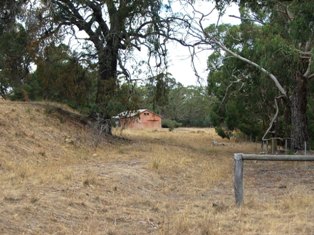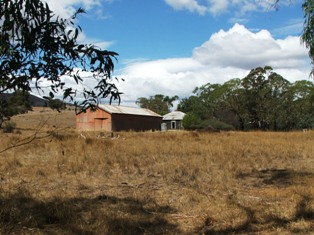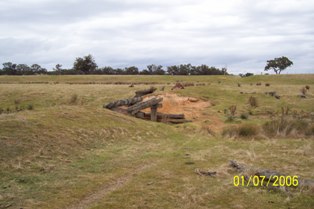
A view of the Company's loco shed from Major's Line Road, along the rail bed that led to the road and out into the forest. Kevin Crockett, 2015.
A private railway, it ran into the Moormbool Forest using road reserves where possible. Victorian Railways locomotives were permitted restricted distance access into the siding for the purpose of picking up trucks loaded with wood brought in from landowners' properties and the forest. The operation came to an end about 1927 after an unsuccessful attempt to sell it to the Victorian Railways.
The siding location exists on private property today.



